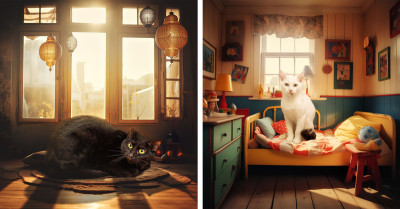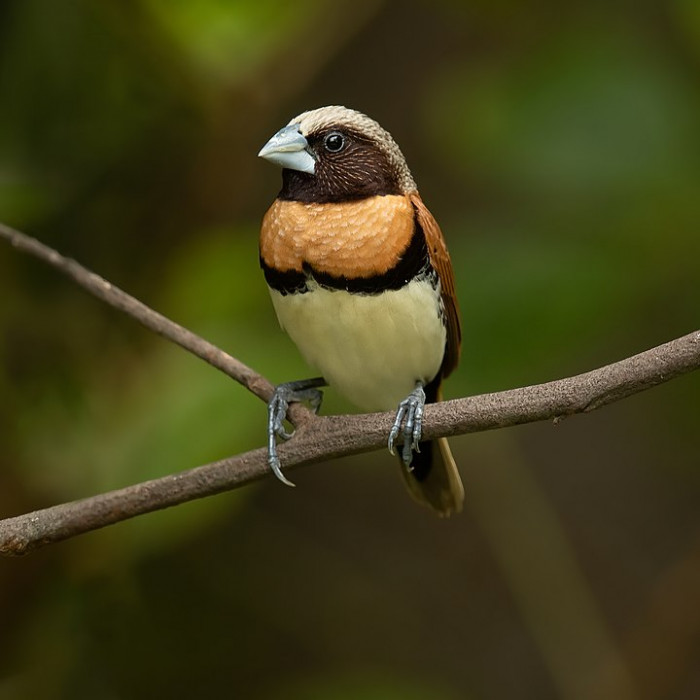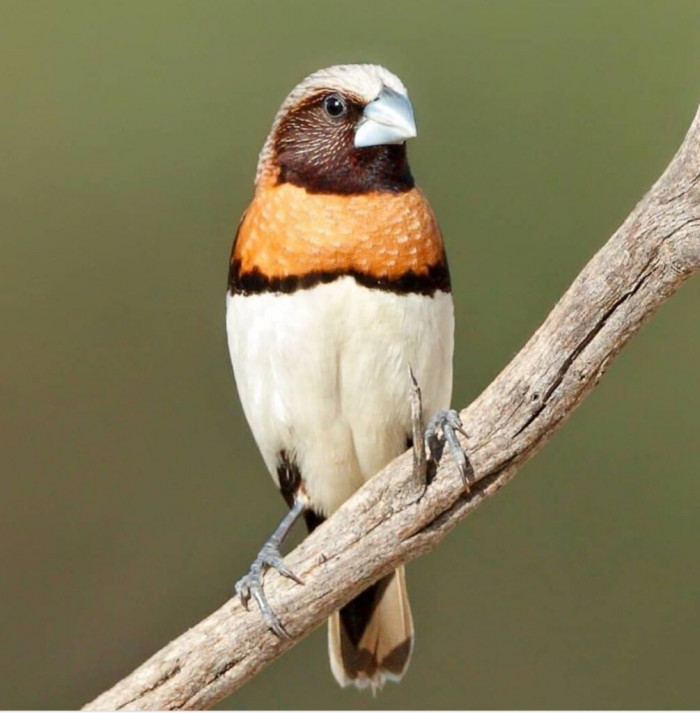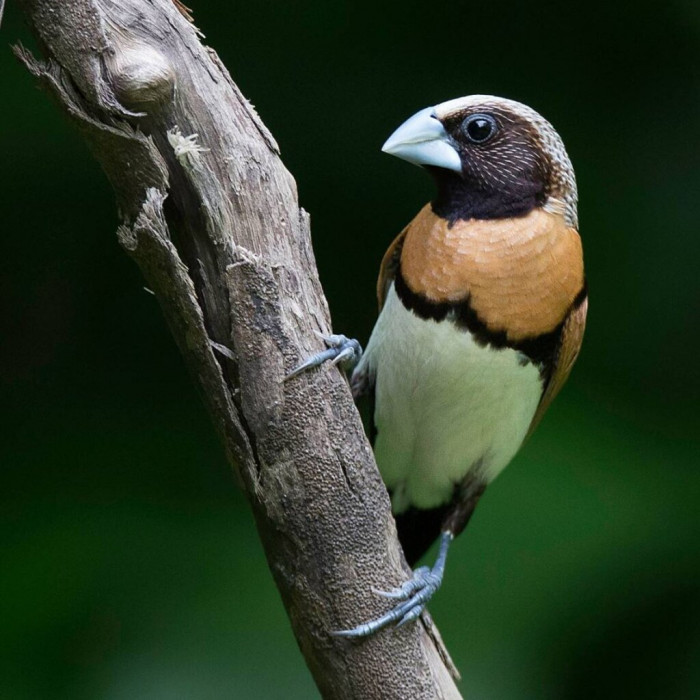
Introducing The Chestnut-Breasted Mannikin, A Beautiful Bird With Faint Shades Of Brown And A Good-Looking Tail
Their are so adorable with their brilliant colors and small size.

The Chestnut-breasted Mannikin is a brown finch with a black face, grey crown and bill. The chestnut-brown chest of this bird is separated by a black bar from its white underparts.
Its tail and rump are golden orange in color. It also has a black under-tail.
Female Chestnut-breasted Mannikins are paler than males. The young ones are evenly olive-brown at the top and pale below.
Chestnut-breasted Manikins are typically seen in Australia's northern and eastern coastal regions. They fly in small groups or pairs.
During rainy seasons, they are seen in low-land areas with tall grasses. Then during the dry season, they migrate.
These birds build their nests in tall grasses, and at times, in shrubs. When it's a non-breeding season, they may fly with flocks, which can consist of hundreds of birds.
They fly with amazing coordination. The Chestnut-breasted Manikins flutter quickly as they perform simultaneous turns prior to suddenly dropping into shrubs and vegetation.
They generally work together with other finch species. They include Crimson Finches, Double-barred Finches, Long-tailed Finches, Pictorella Mannikins, Red-browed Finches, Star Finches, Nutmeg Mannikins, and Yellow-rumped Mannikins.
They forage through low grass and move up the stems to gather seeds directly from the heads. They generally do not take seeds that have already fallen on the ground.
Say hello to the Chestnut-breasted Mannikin (Lonchura castaneothorax).

Since Chestnut-breasted Mannikins have a very large range, they do not reach the Vulnerable thresholds, which is based on the range size criterion.

These birds are commonly found in long grasses, reed beds, mangroves, and swamps.

They're not just found in Australia. They can be seen in New Guinea as well.

These birds feed on grass seeds from the stalk.
Winged termites are also part of their diet. They eat them during the start of the breeding season.

The Chestnut-breasted Mannikins build nests in colonies.
Their nests are close to each other in sugar cane, reeds, or grass clumps They sit less than 2 meters above the ground.
The nests are round and made of fresh or dried grass blades. Fine grasses line them as well.
Although the nest won't have entrance tunnels, the entrance may feature a hood. The males and females are the ones that build the nest, incubate the eggs, and feed the babies.
However, it's only the females that stay in the nest overnight. Birds held captive cab breed in finch next boxes and woven wicker nests.

These birds are very social creatures.

During the breeding season, they will join other flocks in search of food. They distinctly like barley seed, so locals call them "barley birds".

See the Chestnut-breasted Mannikin in action.
What makes them charming is their chirpiness and friendliness.
Their vivid brown color and small size are characteristics that make them cute to us humans. The magnificent pattern they have on their patterns are so beautiful too.
The sounds they produce includes simple and complex songs. What's even more interesting about these tunes is that specific communication happens between pairs of birds.
Such communication starts with songs meant for attracting a potential bird. Through singing and peering the male gets introduced to the female.
May







